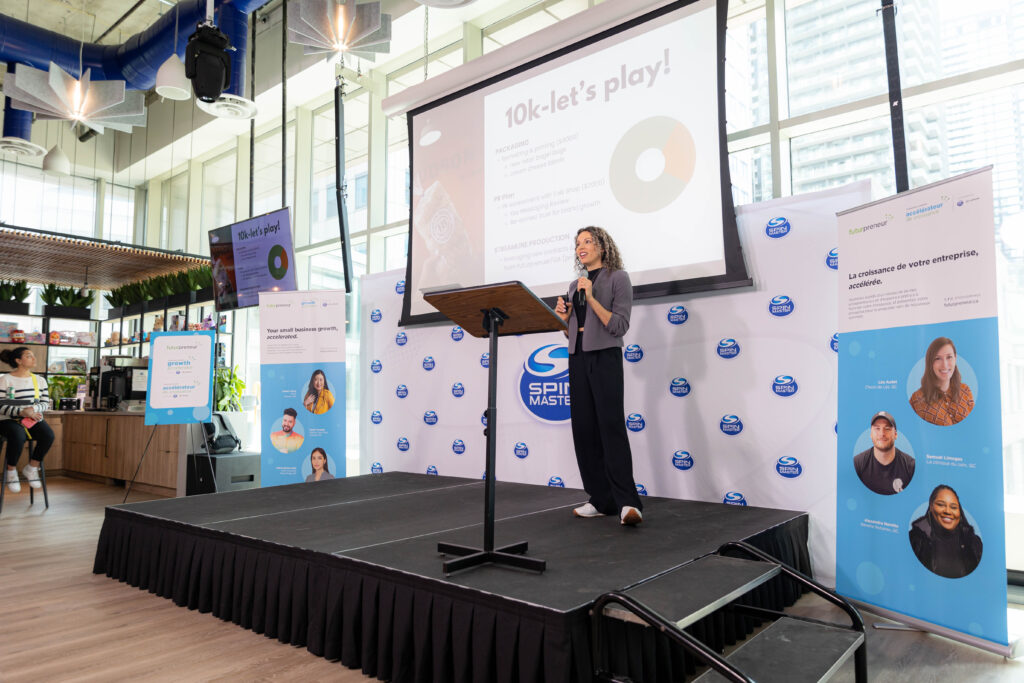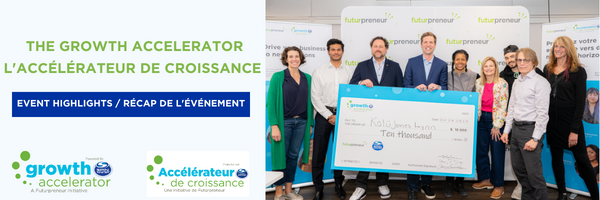
- Futurpreneur(s) and partners
A Breakdown of Social Media Platforms and Their Uses

Social networks come in all shapes and sizes, and knowing what network is best for what, and for who can be overwhelming for new business owners. Jumping on the bandwagon of every social network “just because” isn’t going to garner the success you are looking for, so taking the time to get to know each network will prevent you from biting off more than you can chew. Here is a breakdown of each of the major social networks, their primary uses and some best practices to help make your life a little easier when building your businesses social presence.
Facebook is the market leader when it comes to social media platforms, with over 1.65 billion monthly active users, and a 15% increase of growth year over year, Facebook makes it easy for you to create a personal profile and connect and share with your family and friends online.
With users spending more time on Facebook (40 minutes) than any other social platform and almost half of consumers liking a brand or business page on the platform, this platform can be an effective tool for small business owners to build an audience and image for their brand and business.
Primary Audience:
Facebook has users from all age demographics, making it one of the most diverse social channels, but the largest age bracket is young females (77%) between the ages of 18-29 (87%).
Primary Uses for Business:
- Building an audience and following for your brand
- Interact with customers and fans by being there to answer questions, and start discussions
When should you post?
- Highest traffic occurs mid-week between 1 to 3pm
- Engagement on Thursday’s and Friday’s is 18% higher
- Posting only 1-2 times a day attracts the most engagement
Cons:
It can be a hard platform to stand out on organically as Facebook has a fancy algorithm which is constantly changing. Currently the algorithm favours particular content based on your fans usage habits and past interactions. Keep in mind that just because you have X number of Facebook fans, that doesn’t mean all those fans are seeing each thing you post. It’s likely only the fans that interact with your page on a regular basis will see it since they’ve shown the most interest in your brand.
Twitter is a social networking site that allows users to send and read short (140 character) messages referred to as “tweets”. The platform has over 750 million users, and is a great channel to engage with other users, and make new connections. 67% of Twitter users are also more likely to buy from brands they follow on Twitter, so this can be a great (and necessary) tool for some small businesses.
Primary Audience:
Twitter’s largest demographic is young adults between the ages of 18-29 (37%) and has a pretty equal gender breakdown with 24% of its users being male, and 21% being female.
Primary Uses for Business:
- Following and engaging with other users that would be interested in what you have to offer
- Interacting with your fan base, and answering questions, resolving complaints, etc.
- Building relationships with current and prospective customers, partners, and people within your network
- Sending people to more information on your website
When should you post?
- For B2B businesses, weekdays provide 14% more engagement than weekends
- For B2C businesses, engagements and clicks are highest on weekends and Wednesday’s
- Minimum of three tweets a day for optimal engagement
Cons:
Unlike Facebook with a complex algorithm that determines the lifecycle of your businesses content, Twitter has a very short lifecycle. A tweet only has about an 18 minute lifespan, meaning that if you aren’t active, and regularly posting, your content could be completely missed.
A social networking site designed for the business community to network and connect with one another, and with over 347 million members, the site is clearly a popular one among this community.
Primary Audience:
One of the only social networks that the majority of users don’t fall between 18-29 years old, LinkedIn is more popular among those that fall between 30-64 year olds (61%), who are college graduates (50%) and have a higher income level than the typical young professional.
Primary Uses:
- Showcase your workplace and what it’s like to work there
- Post new job opportunities and recruit potential employees
- Connect and engage with other business professionals
When should you post?
- One post per weekday which allows you to reach approximately 60% of your audience
Cons:
Since LinkedIn is a business oriented platform, targeted at the older generations, it won’t provide much value to businesses that have a younger target market (think those that haven’t finished college yet), or aren’t business-centric. For example, this may be a great place for a web design company to be because they’ll be seeking new businesses as clients, but as a small ice cream shop, it is likely not going to provide much value.
Instagram is an online mobile photo and video sharing social networking platforms that allows users to share photos and videos and interact with other users. The platform has over 300 million users that are sharing over 60 million photos each day.
Primary Audience:
More than half of the age demographic for Instagram users is between the ages of 18-29.
Primary Uses:
- Publishing and viewing visually appealing content such as videos, and photos
When should you post?
- 5pm when people are ending their workday
- In the early morning when less people are online and publishing (2am-5am)
- Two posts per day
Cons:
Instagram doesn’t allow for links to be embedded in regular organic posts, therefore this platform isn’t great if you are trying to lead your customers elsewhere, like to a specific page on your website. The other con is that if you don’t have highly visual, quality content you’re sharing, you aren’t going to have much success on this network.
Think of Pinterest as an online bulletin board as this platform allows you to search for visual content such as recipes, fashion, or do-it-yourself inspiration, and “pin” it on to one of your boards. Pinterest can be an excellent platform for businesses to drive traffic to their website or blog, but only if the demographics match your business.
Primary Audience:
Users of Pinterest are heavily weighted towards young women (42%). The site has been famously known to be a popular place for moms and those looking for inspiration on wedding, cooking, and do-it-yourself projects.
Primary Uses:
- Sharing visually appealing content that links to your website or blog for more information
- Developing boards of interest to show off your products and/or content that would be of interest to your audience
When should you post?
- Spread your pinning out throughout the day to reach different people in your audience, and to ensure you don’t flood your fans feeds with too much content
- To be the most effective, post (or re-post) around five pins per day
Cons:
Pinterest is a platform that isn’t for everyone as it has a very specific target audience. Pinterest also requires you to have visually appealing images and regular different content to share. For example, if your business has a blog, you could pin different images that are related to that blog post and link to it, but if you don’t have regular content, or regular new products to showcase, linking just to your businesses website isn’t going to grant you success.
Snapchat
Snapchat is an image and video messaging mobile application. With 100 million active users, this platform which was only developed in 2011 has quickly become a favourite among young people, so there’s no question on why businesses are looking for ways they can use the platform to reach their audience.
Primary Audience:
The user demographics for Snapchat are 70% female under the age of 25 years old, and 62% of users make $50K or less a year.
Primary Uses:
- Storytelling
- Sharing behind-the-scenes and exclusive content
- Engaging and interacting directly with your fans
When should you post?
Although there isn’t really a set time to post on Snapchat, it’s important to think about frequency and length. Followers likely don’t want to watch 200 seconds of your content, no matter how exciting you think it may be.
Cons:
Snapchat is a platform that requires much more creativity then some other platforms. You have to be a business with a plan and regular interesting things you can publish. For example, if you work out of a cubicle all day, you may not have the best content to tell a story about your business.
Now that you’ve figured out which social networks may be the right ones for you and your business, head over to our Beginner’s Guide to Building a Social Media Strategy to help you build out your game plan.
Written By: Lauren Marinigh, Social Media & Content Creation Coordinator, Futurpreneur Canada





